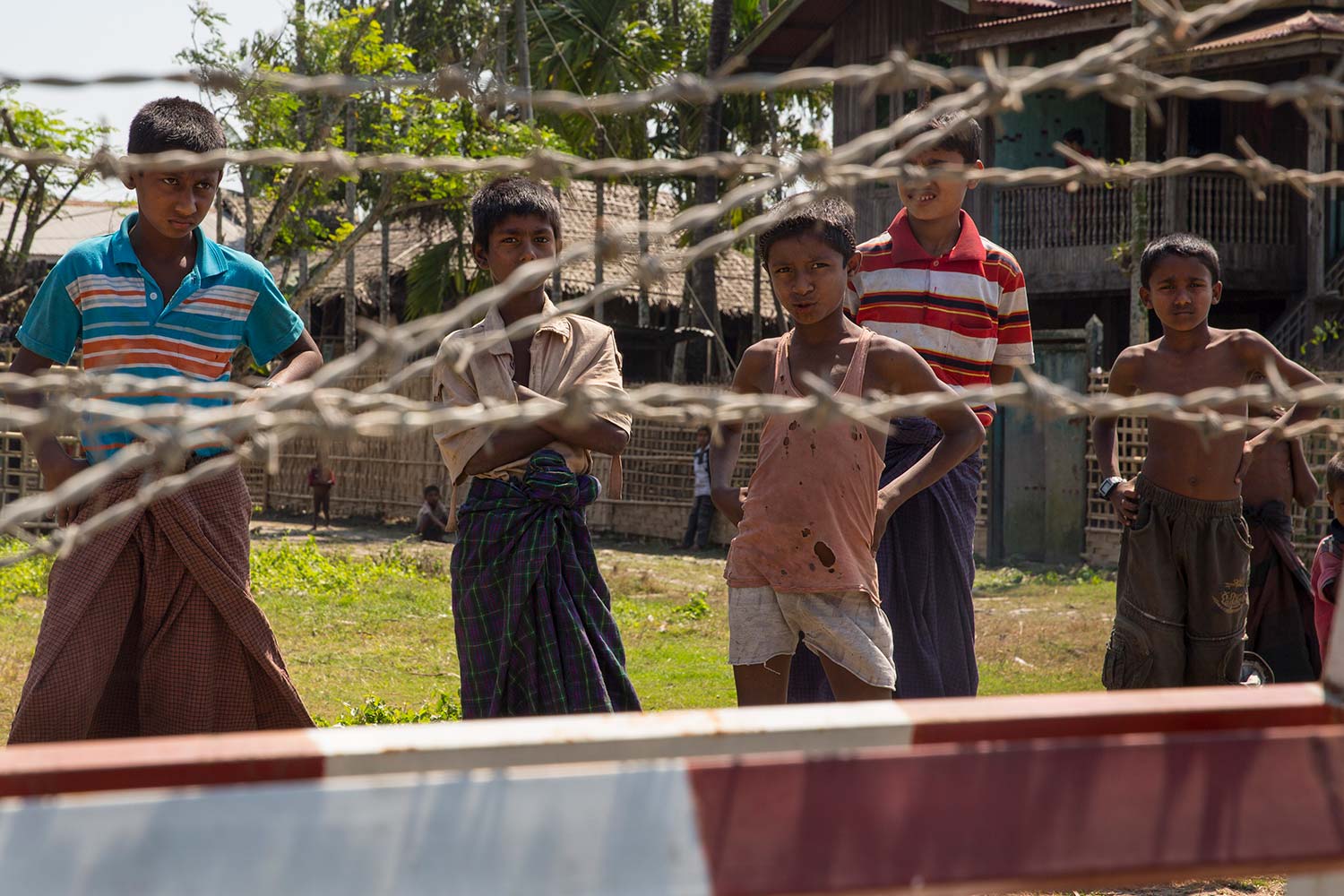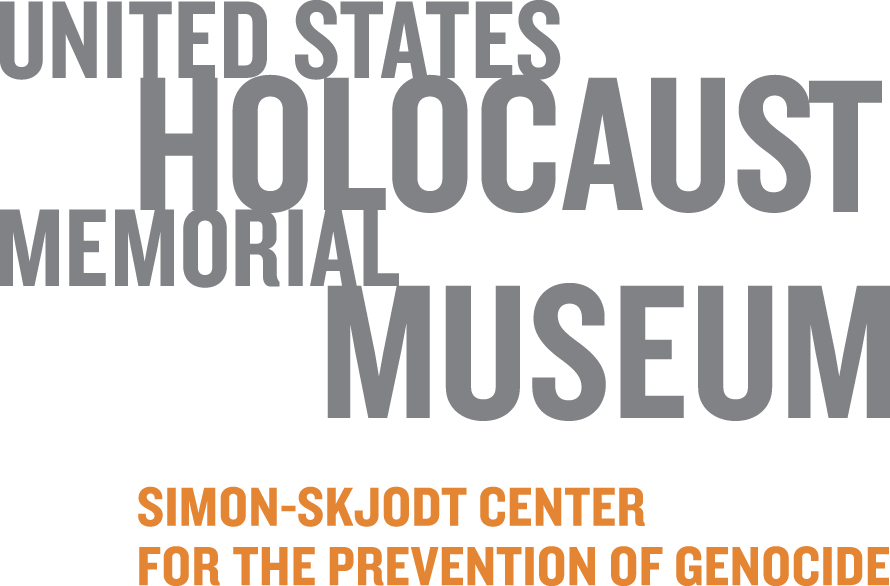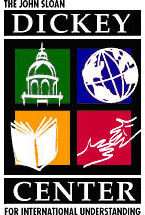
About the Project
Assessing Risk for Mass Atrocities Around the World
Genocide and mass atrocities are rare yet devastating crimes. They are also preventable.
The Early Warning Project assesses the risk of mass atrocities in countries around the world using state-of-the-art quantitative and qualitative methods and a range of widely available data. In studying genocide and mass atrocities, we have learned that they are never spontaneous. They are always preceded by a range of early warning signs. If these signs are detected, their causes can be addressed, preventing the potential for catastrophic progression.
Photo above: Burma. Paula Bronstein Getty Images Reportage for the United States Holocaust Memorial Museum.
Project Overview
The ultimate goal of this project is to contribute to the prevention of genocide and mass atrocities. While our system highlights and analyzes those cases where mass atrocities are currently ongoing, we seek to shine a light and spark discussion on those cases where mass atrocities have not started, but where risks are detected.
The United States Holocaust Memorial Museum’s founding charter, written by Holocaust survivor Elie Wiesel, mandates that our institution strive to make preventive action a routine response when the signs of genocide and other mass atrocities appear. Wiesel wrote that “only a conscious, concerted attempt to learn from past errors can prevent recurrence to any racial, religious, ethnic or national group. A memorial unresponsive to the future would also violate the memory of the past.” In partnership with Dartmouth College, we study past situations where governments and nonstate groups systematically targeted and killed thousands of civilians. In doing so, we identified a range of patterns and circumstances that often precede such violence.
As the first public early warning system for mass atrocities, this project aims to provide governments, civil society groups, and other influential actors early and reliable warnings of mass atrocities and, as a result, greater opportunities to take preventive action.
Goals
The Early Warning Project’s goals are to:
- Improve the quality and depth of discussions about risks of genocide and mass atrocities and the ongoing need for prevention policies both in particular countries and globally.
- Advance the science of early warning for mass atrocities.
It is impossible to know precisely when and where mass atrocities will occur. Instead, our system is designed to use the best available methods to:
- Assess countries’ relative levels of risk,
- Detect significant shifts in risk, and
- Inform the design and implementation of preventive strategies.
Types of Assessments
The Early Warning Project produces three types of assessments:
- The annual Statistical Risk Assessment uses publicly available data and statistical modeling to produce a ranked list of more than 160 countries based on their likelihoods of experiencing an onset of mass killing.
- Crowd Forecasting tools—including a Public Opinion Pool and annual Comparison Survey—leverage the “wisdom-of-the-crowd” and provide real-time assessments.
- Country Reports provide detailed qualitative assessments of context-specific dynamics in selected high-risk countries. These reports are produced by Museum staff in partnership with country experts and include recommendations for preventive action.
“The first major element of a comprehensive system to prevent genocide and mass atrocities is a reliable process for assessing risks and generating early warning of potential atrocities... Effective early warning does not guarantee successful prevention, but if warning is absent, slow, inaccurate, or indistinguishable from the 'noise' of regular reporting, failure is virtually guaranteed.”
Project History
The Early Warning Project is a joint initiative of the Simon-Skjodt Center for the Prevention of Genocide at the United States Holocaust Memorial Museum and the Dickey Center for International Understanding at Dartmouth College. The idea for the project was developed during Professor Benjamin Valentino’s fellowship at the Simon-Skjodt Center in 2011 and was implemented with the assistance of Dr. Jay Ulfelder, a noted expert in statistical forecasting methods. Valuable early assistance to the project was provided by the Digital Arts, Leadership and Innovation Lab, and the Neukom Institute for Computational Science at Dartmouth College. The project was launched publicly in 2015. In 2017 the project revised its Statistical Risk Assessment strategy, with the assistance of Professor Valentino at Dartmouth and Professor Chad Hazlett at UCLA, to include nonstate-perpetrated mass killing and to extend the forecasting window to two years.
Learn more about the changes to the statistical model in 2017.
About the Simon-Skjodt Center for the Prevention of Genocide
The Museum’s Simon-Skjodt Center is dedicated to stimulating global action to prevent genocide and mass atrocities and to catalyze an international response when they occur.
In 1979, the President's Commission on the Holocaust outlined a vision for the United States Holocaust Memorial Museum with a three-pronged mandate: to serve as a memorial to Holocaust victims and survivors; to stand as the pre-eminent center for Holocaust education; and to "alert the national conscience ... to insure that such a totally inhuman assault as the Holocaust—or any partial version thereof—never recurs."
The Museum's Committee on Conscience was formed to fulfill the third part of the mandate, which led to the creation of the Simon-Skjodt Center for the Prevention of Genocide.
About the Dickey Center for International Understanding
The Dickey Center unites the diverse strengths of Dartmouth College—its students, faculty, and undergraduate and graduate schools—in addressing the world’s challenges. The Center is defined not only by the scope of the issues it addresses, but the way in which it does it: through collaboration, innovation, interdisciplinary study, and respect for the diversity of viewpoints.
Working with Dartmouth’s stellar faculty, the Dickey Center aims to produce the best understanding and analysis of international issues with collaborative, multidisciplinary research on such complex problems as global climate change, world health crises, war and conflict resolution, and poverty alleviation. In bringing together the talents and resources of Dartmouth’s professional schools with those of the College of Arts and Sciences, it seeks to be the force that unites the university in the development of new understanding, knowledge and solutions to world problems.
The Dickey Center for International Understanding was established in 1982 and dedicated to the memory and values of Dartmouth College President John Sloan Dickey (1907-1991).
Website Credits
Many people contributed to this website, each in their own way. We would like to extend our heartfelt thanks to all of them. The members of the core website production team are Jide Ehimika, Noah Glushien, Greg Jacobson, Robert Twitty, Lynne Venart, and Mollie Zapata. The interactive map and risk factors features were created by Nick Harbaugh and Lauren Malkani. Special thanks are extended to Andrea Gittleman, Laura Green, Chad Hazlet, Sarah Lumbard, Jill Savitt, Benjamin Valentino, and Lawrence Woocher for their guidance, and to Barbara Martinez and Rachel Samuels for their production support.


Thanking Our Donors
The United States Holocaust Memorial Museum is deeply grateful to the following donors for their generous support of the Early Warning Project. To support the Museum's mission, donate here.
Gifts of $100,000 or more
Humanity United
Price Family Philanthropies
Booz Allen Hamilton

